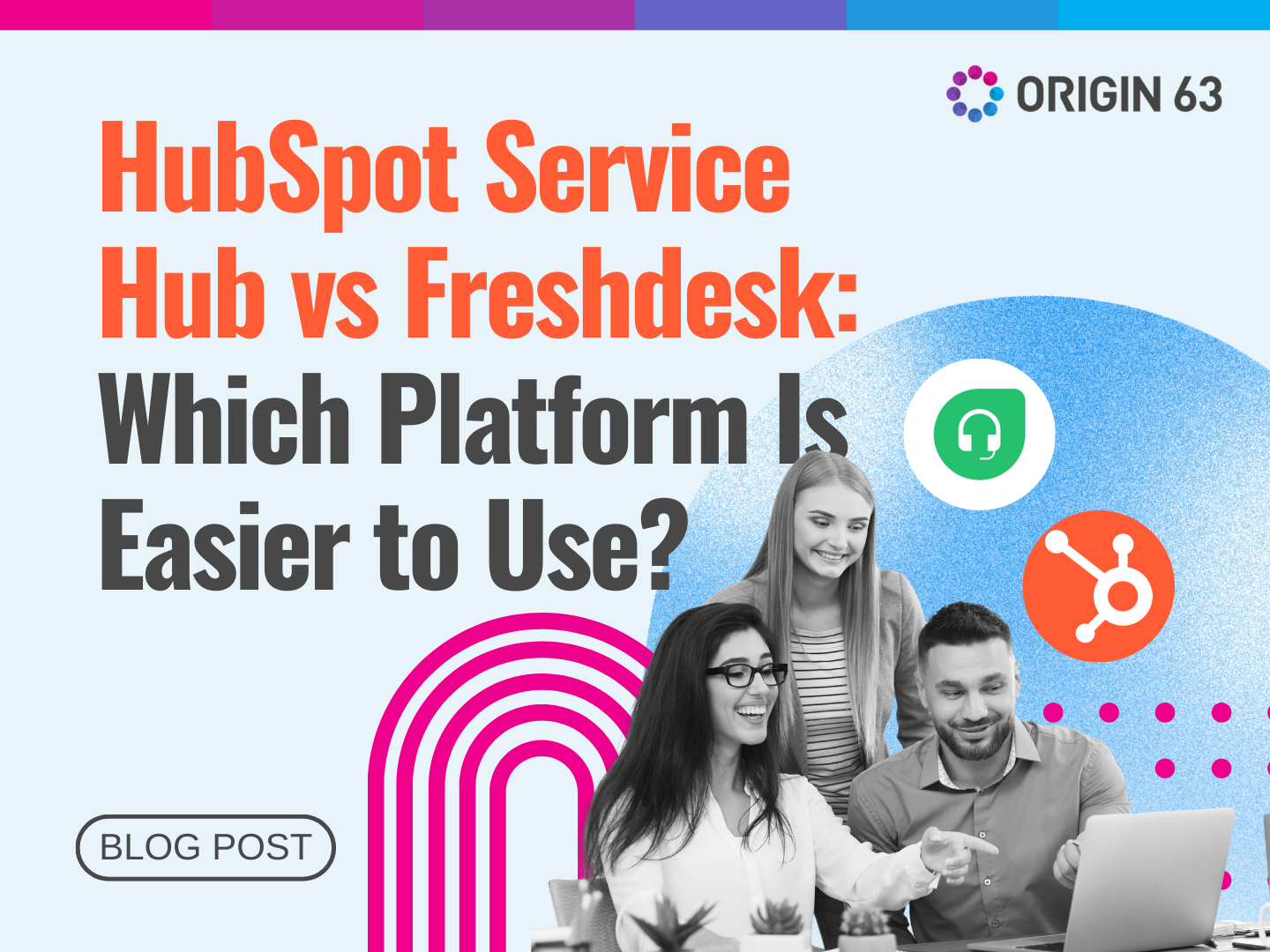Businesses that truly listen to their customers and act on their feedback are the ones that thrive.
Customer insights are valuable information you gather about your customers' needs, preferences, and experiences. Beyond collecting data, you analyze it to uncover patterns and trends that can inform your business decisions.
Leveraging customer insights can help you improve every aspect of your customer experience—from your products and services to your marketing and support.
How to Gather Customer Insights

Your customers are a goldmine of information. They can tell you what they love about your product, what frustrates them, and what features they crave.
There are several ways to collect customer insights directly from your customers and indirectly through other sources. You should use a mix of methods to get a well-rounded understanding.
Here are seven ways to find out what your customers think:
1. Ask them Directly
Surveys and questionnaires are great ways to gather feedback. For example, a company developing a project management tool could send users a survey asking about their experience with specific features like task assignment, file sharing, and deadline tracking.
This is valuable insight because it reveals what aspects of the tool users find most helpful and what areas need improvement. Directly asking customers allows you to gather specific feedback that you can use to refine your product or service and ensure it meets their needs.
2. Check the Pulse
Net Promoter Scores (NPS) and Customer Satisfaction (CSAT) surveys show customer sentiment. These surveys ask, "How did we do?" after a customer interacts with your support team.
Surveys like this are perfect for gauging satisfaction after interactions because understanding customer satisfaction helps you identify areas where you excel and areas where you can improve the customer experience.
3. Borrow Knowledge from Industry Reports
Use market research from bigger companies to understand industry trends. These could be evolving security needs for businesses or the growing demand for mobile-friendly software solutions.
Industry knowledge allows you to stay ahead of the curve and adapt your product or service to meet the market's changing needs.
4. Think Outside the Box
Sometimes, customers don't know what they want until they see it. Be observant! Consider analyzing gaps in your current service by looking at common customer support tickets. It can show hidden needs or frustrations that traditional surveys might miss.
A video editing software company might conduct user interviews and discover that many customers struggle with a specific editing workflow. This might suggest an opportunity to create a new tutorial or improve the software's functionality in that area.
5. Watch What They Do

Website analytics tools track how customers interact with your online presence. It includes first-party data such as clicks, page views, and time spent on specific features. These can reveal hidden preferences and areas for improvement.
For instance, you might see that many users abandon a specific onboarding page on your SaaS product. It suggests that the page might be confusing or have usability issues.
6. Test and Learn
Run A/B tests to see how users respond to different versions of your website or app. For example, you could test two headlines for a landing page or compare two layouts for a product feature.
Real-time data provides clear answers on what works best. It allows you to optimize your website and app for better user engagement and conversions.
7. Let the Machines Help
Predictive modeling uses complex algorithms to analyze vast amounts of data, including past sales history, customer demographics, and website behavior. Then, it makes educated guesses about future customer behavior.
An e-commerce store might use predictive modeling to identify customers likely to churn and target them with special offers or personalized recommendations. This proactive approach can help retain customers and boost revenue.
HubSpot Surveys and Analytics

Imagine having a direct line to your customers' thoughts—what they love about your business and what could be improved. You need a dedicated tool to do so.
HubSpot Service Hub's survey feature is a strong candidate for this. How it works:
Effortless Survey Creation
You don’t need coding or design experience to use this feature.
HubSpot offers a library of customizable survey templates to cover various scenarios, from post-purchase satisfaction surveys to feedback on specific features. You can add questions and personalize the look and feel to match your brand.
Reaching Your Audience
HubSpot Service Hub makes it easy to deliver surveys through multiple channels.
You can send them via email, embed them directly on your website, or even include them within your service chat conversations.
This flexibility ensures you reach your target audience at the right time.
The Right Questions for the Right Answers
HubSpot offers various question formats to gather the most valuable feedback. Depending on the insights you're seeking, you can use multiple-choice, star ratings, or open-ended questions.
Actionable Insights at Your Fingertips
Forget sifting through mountains of data. HubSpot's built-in feedback dashboards present your survey results in clear, easy-to-understand reports. See what matters most—customer satisfaction scores (CSAT) and trends—and even identify specific areas for improvement.
How to Analyze Customer Feedback with HubSpot
Gathering customer feedback is just the first step. After getting that data, you should start analyzing it to understand what it means for your business.
Why Analyze? If customer feedback is a goldmine, analytics is your pickaxe to unearth those valuable nuggets. Analyzing your feedback helps you:
- Identify trends: See what issues keep popping up or what features customers consistently praise.
- Measure progress: Track how your customer satisfaction changes over time based on their feedback.
- Make informed decisions: Use data to prioritize improvements and ensure your efforts have the most substantial impact.
HubSpot makes analyzing customer feedback a breeze. After creating and publishing surveys, follow these steps:
Step 1: Find Your Survey
Head to your HubSpot account and navigate to the survey you want to analyze. It could be a customer satisfaction survey, a customer support survey, or anything else you've created.
Step 2: Explore the Responses Tab

This tab shows all the individual responses you've received. To delve deeper, you can filter by date range and company or see only responses with comments.
Step 3: Dive into the Analyze Tab
Here, you'll find charts and summaries that break down your feedback data.
- For NPS Surveys: See your Net Promoter Score (NPS), which indicates your overall customer loyalty. You'll also see the breakdown of Promoters (happy customers), Passives (neutral), and Detractors (unhappy customers).
- For CSAT Surveys: See how satisfied your customers are and how that satisfaction changes over time.
- For CES Surveys: Understand how customers perceive your support experience and identify areas for improvement.
Applying Customer Insights to Improve Customer Experience
Once you've analyzed and interpreted the customer insights, it's time to implement them to enhance customer experience. Here are some ways to do that:
1. Product/Service Improvements
Use feedback on pain points, desired features, and use cases to guide product roadmaps and updates. Improve existing offerings or create new products/services that better meet customer needs.
2. Enhancing Customer Support and Service
Insights on everyday issues, frustrations with support processes, and gaps in self-service options can help optimize support experiences. For example, you can update knowledge bases, streamline workflows, provide more training, etc.
3. Personalizing Marketing and Sales Efforts
With a deeper understanding of customer segments, behaviors, and preferences, you can create more personalized, relevant marketing campaigns and sales interactions that resonate better.
4. Optimizing User Experience and Website Design
Apply insights on user behavior, pain points in navigating websites/apps, and feedback on specific UX elements to improve the overall digital experience through design and functionality updates.
How to Use Customer Insights Effectively
Simply collecting this data isn't enough. You need a system to transform insights into action. Here's a five-step approach to harnessing the power of customer insights:
1. Establish a Customer-centric Culture
This culture is the foundation. Make customer satisfaction a core value. How can you do this?
First, ensure all teams, from product development to marketing, can access and consider customer feedback during decision-making.
You should also train your team to actively listen to customer concerns and identify underlying needs. Then, empower your frontline staff to address these concerns and implement solutions depending on the situation.
They may sometimes make decisive, proactive steps beyond the standard procedure to resolve issues.
2. Collect Feedback Continuously

Feedback shouldn't be a one-time event. Integrate surveys, polls, and social media monitoring to capture customer sentiment throughout their journey.
For example, you can integrate post-purchase surveys to gauge satisfaction with specific touchpoints.
You can also monitor brand mentions and participate in conversations on social media platforms. This will help you gauge customer sentiment toward your brand and identify emerging trends.
3. Use the Right Tools
Fantastic tools are available to streamline data collection and analysis. HubSpot Survey & Reporting is a great option, but you should also evaluate different solutions to find one that matches your specific needs.
Before choosing a specific solution, identify the type of data you need to collect and the desired functionalities. Consider tools for survey creation, social media listening, and customer relationship management (CRM) software.
4. Act on Insights Quickly
Don't let valuable insights gather dust. Focus on insights that suggest concrete improvements or solutions to customer pain points.
Establish a clear action plan with defined timelines and responsible parties for prioritized feedback. It ensures accountability and facilitates timely implementation.
Include all the relevant teams here. Disseminate actionable insights and the corresponding action plans across relevant teams.
For example:
- Product Team: Streamlining the checkout process by reducing unnecessary steps and optimizing the user interface.
- Marketing Team: Updating app store descriptions and user guides to reflect the improved checkout experience.
- Customer Support Team: Preparing responses to anticipated customer queries about the changes to the checkout process.
Doing this fosters collaboration and ensures everyone is on the same page regarding how to solve customer concerns.
5. Close the feedback loop
Lastly, let your customers know you heard them. Whenever possible, acknowledge and respond to customer feedback, both positive and negative. It shows that you take their input seriously.
For instance, share updates on how you use customer feedback to improve your product, service, or policies. Updates build trust and encourage continued engagement.
You can do this through blog posts, social media updates, or customer testimonials.
Real-Life Success Stories
Companies across industries are leveraging customer insights to transform their customer experience. Here are a few inspiring examples of businesses using customer feedback and data to drive improvements:
Boyd Boosts Lead Quality and Productivity with HubSpot
Boyd Corporation, a leader in engineered materials, needed a deeper understanding of its customers to improve marketing, sales, and service efforts.
They switched from Pardot to HubSpot's Marketing and Service Hubs. This allowed them to leverage powerful automation and gain valuable customer insights through surveys, behavior data, and service analytics.
Results:
- 82% Increase in High-Quality Leads: Analyzing customer data allowed Boyd to tailor their marketing campaigns to attract leads with a higher chance of converting into sales.
- 5x Faster Service Resolution: Customer feedback helped Boyd identify areas to streamline their service processes, reducing average resolution times.
- 16% More Lead Submissions: HubSpot's automation tools, fueled by customer insights, helped Boyd capture more leads overall.
Boyd's success story shows how you can use customer feedback to optimize operations. They leveraged HubSpot's survey and analytics features and achieved impressive results without increasing staff size.
Functionly Scales with Confidence Using HubSpot's Customer Insights
Functionly is a company empowering executives with data-driven decision-making. They faced challenges managing customer interactions and measuring success as it expanded globally.
They joined the HubSpot for Startups Program and consolidated their entire platform onto HubSpot. It provided features like centralized conversations, custom surveys, and integrated data for better targeting.
Results:
- Streamlined Communication: HubSpot's Conversations inbox allowed Functionly to centralize communication across all teams, improving customer service efficiency.
- Actionable Customer Feedback: Custom surveys provided valuable insights into customer satisfaction and Net Promoter Score (NPS), helping Functionly identify areas for improvement.
- Prioritized Lead Management: Workflows powered by customer data allowed Functionly to prioritize high-value leads, ensuring they receive the most attention.
- Data-Driven Targeting: Integrating product usage and billing data enabled Functionly to more effectively target its offerings and support.
Functionly's story highlights how robust customer insights can fuel business growth. HubSpot's tools provided them the foundation to scale their customer base while ensuring exceptional service.
Use Customer Insights to Improve Customer Experience
Gather insights directly from your customer base through surveys, first-party data, A/B testing, and other feedback channels to find a goldmine of information.
Then, analyze those insights to pinpoint areas for improvement and growth opportunities. Look for patterns, segment customers based on preferences, and let the data guide your decision-making.
Don't just collect feedback and let it sit idle. Apply those customer insights to your marketing, sales, product development, and service operations.
Optimize websites and campaigns, enhance product features, refine processes—and make fundamental changes that tangibly improve the customer experience.
Most importantly, build a culture of listening, analyzing, and iterating based on your customers' voices. The most successful companies are customer-centric.
Leverage Customer Insights with HubSpot and Origin 63
Don't let valuable customer feedback go to waste. Partner with Origin 63 to implement HubSpot's best-in-class survey and analytics tools, extract powerful insights from your customer data, and drive meaningful experience improvements.
Our experts will guide you in gathering, interpreting, and operationalizing customer insights so you can deliver the outstanding experiences modern buyers expect. Let’s talk!













.png?width=90&height=90&name=Arrows%20Partner%20Badge-test%20(1).png)

